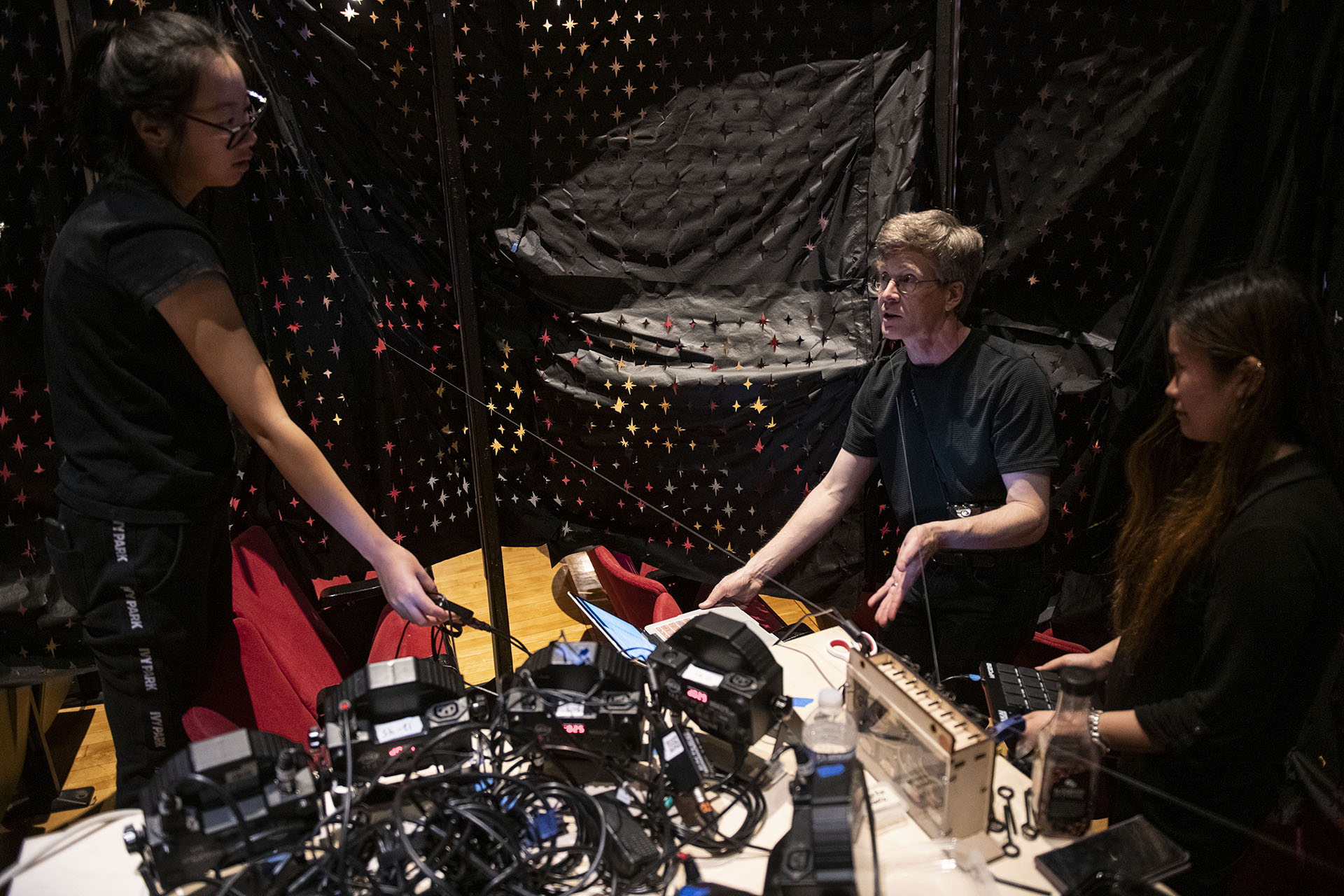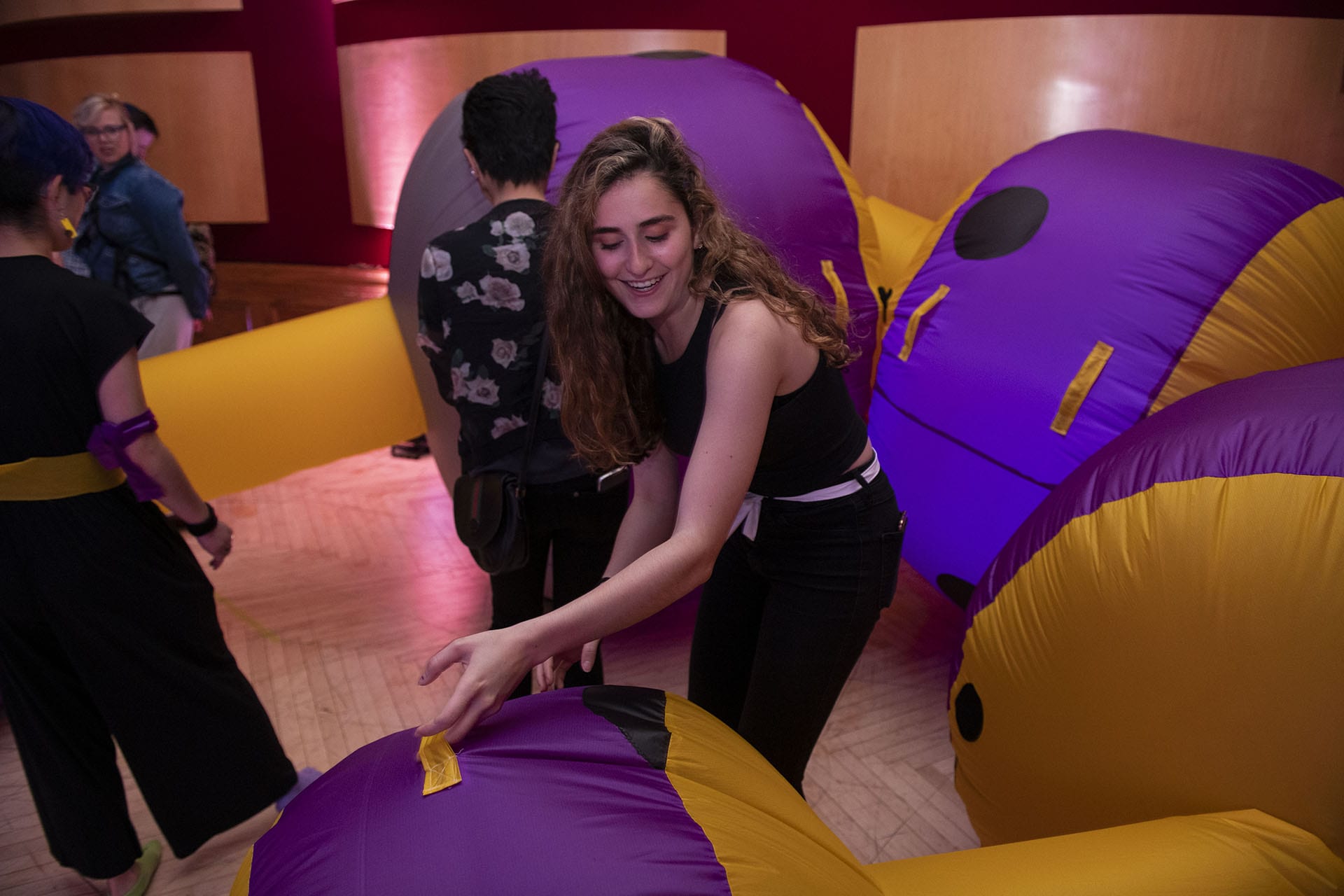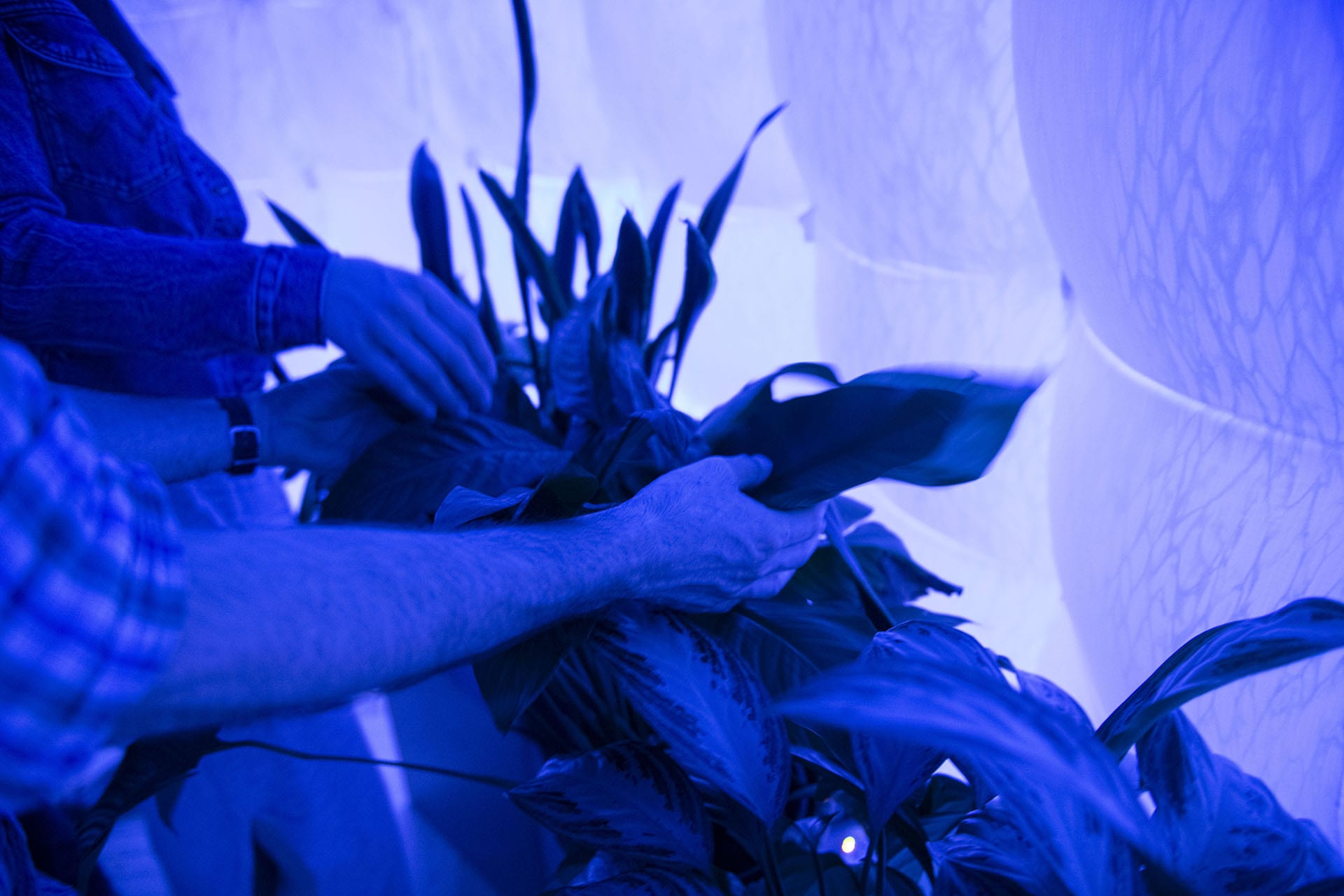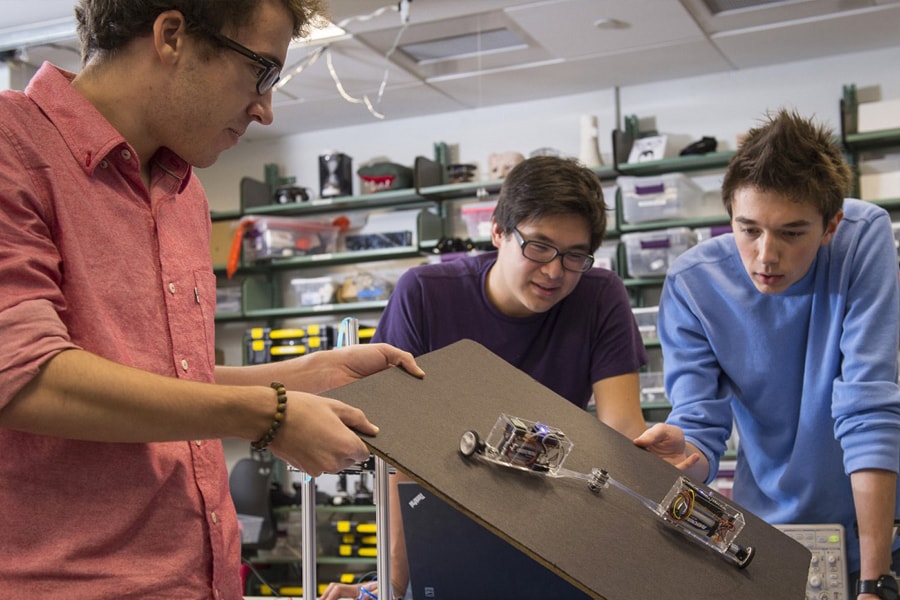Breezy Performance Combines Music, Art and Robotics
From course teams to class partnerships, "Pushing Air" showcases hands-on learning
On a recent Saturday night, a breath of fresh air could be found in Carnegie Mellon University's College of Fine Arts building as students in three IDeATe classes presented their projects in "Pushing Air," an event featuring music, soft-sculpture and textile robotics.
"This has been very rewarding for the students from these different classes to join forces and see how their work can support one another and create an experience that on their own would not have been possible," said Jesse Stiles, an assistant professor in the School of Music, who directs the Exploded Ensemble, which is a hybrid music and research group/course that fuses traditional live performances with experimental techniques. "Music can transform a visual installation and being surrounded by architectural installations completely changes the music."
Three IDeATe classes presented their projects in "Pushing Air," an event featuring music, soft-sculpture and textile robotics.
The Integrative Design, Arts and Technology (IDeATe) Network connects technology and arts expertise from diverse Carnegie Mellon disciplines to advance education, research and creative practice.
As musicians of Exploded Ensemble played student composed pieces on instruments such as guitar, synthesizers, violins and omnichords, they were joined onstage by robotic performance sculptures designed by the students in Kinetic Fabrics that explored concepts of creating animate expression by activating textile media with mechanism and movement.

Garth Zeglin works with students to prepare for "Pushing Air."
Garth Zeglin, an instructor and project scientist in the Robotics Institute, said that the Kinetic Fabrics course is developing a new medium.
"There are long histories of both textile art and puppetry, but relatively little at the intersection of automation and abstract textiles," Zeglin said. "The interdisciplinary nature of IDeATe gives us an opportunity to guide our diverse groups of students into creating new crafts and forms."

"Pushing Air" attendees could push and pull one of the large-scale sculptures on display in the Great Hall.
Olivia Robinson, instructor for Inflatables & Soft Sculptures and co-instructor for Kinetic Fabrics, said students drawn to the courses came from disciplines such as engineering, humanities, computer science and design. For Inflatables & Soft Sculptures, students learned about sewing machines, working at different scales and collaboration to turn flexible, flat materials into 3D forms.
Robinson said showcasing large-scale architectural works for an audience is an important component of the course.
Not everyone in the class identifies as an artist or designer," Robinson said. "But what they are creating is an aesthetic, multi-modal experience that many would recognize as art."
Joseph Paetz, an alumnus of the Department of Electrical and Computer Engineering, said he took the inflatables course after experiencing last year's Snoozefest, a forerunner to "Pushing Air." As a fifth-year scholar, Paetz has been working to build on CMU's culture of making things by getting more students involved and providing greater support.
"I've found I need to be fabricating something. I can't relegate making something with my hands to a hobby," Paetz said.
Paetz said he hoped that by attending "Pushing Air," "people were exposed to something they're not generally exposed to. The combination of music and artwork is very cool and thought-provoking," he said.

Joey Santillo, a senior in sound design and production, created an interactive installation using plants as a sensor, which would measure electrical conductivity changes that generated patterns of light and sound.
Joey Santillo, a senior in sound design and production, is a member of Exploded Ensemble and created an interactive sound and light installation that explored using plants as a sensor. As attendees touched or neared the plants, embedded sensors would measure the electrical conductivity changes that generated changes patterns of light and sound.
"Joey is great, and he has been doing impressive work. The end result was really fascinating," Stiles said.
Future Opportunities
Collaborations between IDeATe courses are already being planned for next year. The third annual SubSurface festival will take place this fall in an inactive mine in Brady's Bend, Pennsylvania.
Since launching in fall 2014, the IDeATe program has been learning from its students and is constantly growing and offers eight undergraduate minors in game design, animation & special effects, design for learning, media design, sonic arts, innovation & entrepreneurship, intelligent environments, and physical computing. Students in any major can study any of the minors, or can take the courses as part of another field of study.
